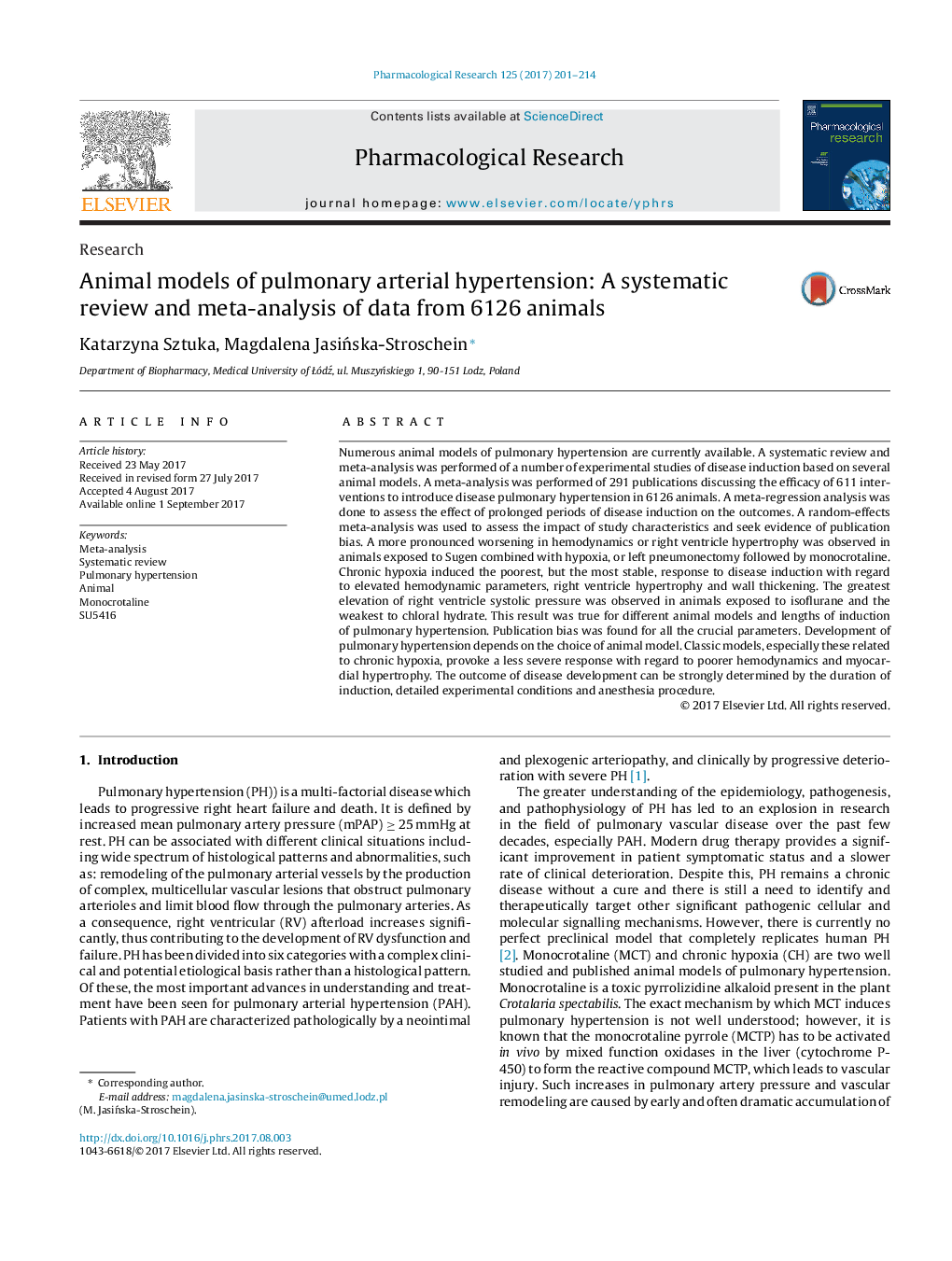| Article ID | Journal | Published Year | Pages | File Type |
|---|---|---|---|---|
| 5557190 | Pharmacological Research | 2017 | 14 Pages |
Numerous animal models of pulmonary hypertension are currently available. A systematic review and meta-analysis was performed of a number of experimental studies of disease induction based on several animal models. A meta-analysis was performed of 291 publications discussing the efficacy of 611 interventions to introduce disease pulmonary hypertension in 6126 animals. A meta-regression analysis was done to assess the effect of prolonged periods of disease induction on the outcomes. A random-effects meta-analysis was used to assess the impact of study characteristics and seek evidence of publication bias. A more pronounced worsening in hemodynamics or right ventricle hypertrophy was observed in animals exposed to Sugen combined with hypoxia, or left pneumonectomy followed by monocrotaline. Chronic hypoxia induced the poorest, but the most stable, response to disease induction with regard to elevated hemodynamic parameters, right ventricle hypertrophy and wall thickening. The greatest elevation of right ventricle systolic pressure was observed in animals exposed to isoflurane and the weakest to chloral hydrate. This result was true for different animal models and lengths of induction of pulmonary hypertension. Publication bias was found for all the crucial parameters. Development of pulmonary hypertension depends on the choice of animal model. Classic models, especially these related to chronic hypoxia, provoke a less severe response with regard to poorer hemodynamics and myocardial hypertrophy. The outcome of disease development can be strongly determined by the duration of induction, detailed experimental conditions and anesthesia procedure.
Graphical abstractDownload high-res image (148KB)Download full-size image
